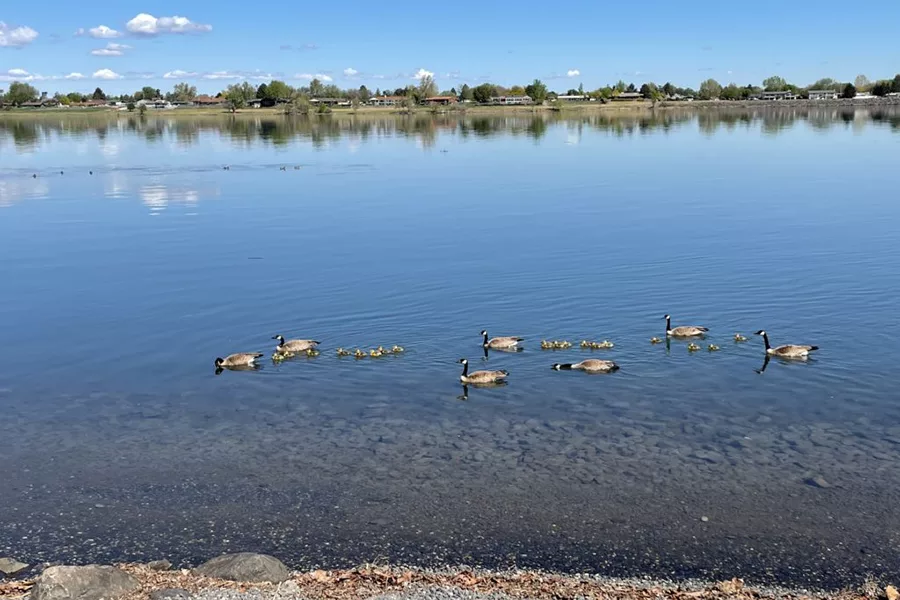
Home » Columbia Riverkeeper says Hanford is ‘no place’ for new nuclear
Columbia Riverkeeper says Hanford is ‘no place’ for new nuclear

December 14, 2021
An Oregon-based environmental nonprofit is challenging the wisdom of fighting climate change with small modular nuclear reactors near the Hanford Nuclear Reservation.
The Columbia Riverkeeper, based in Hood River, said building new nuclear-powered plants at the Energy Northwest complex north of Richland is a threat to the Columbia River, which it is pledged to protect.
The report, titled “Q&A: Nuclear Energy Threatens the Columbia River,” targets a plan by X-energy of Rockville, Maryland, and Energy Northwest, to site a 320-megawatt high temperature, gas, next-generation reactor near Columbia Generating Station, the 1,200-megawatt water-cooled plant.
Grant County Public Utility District is the third partner and buyer for the energy it will produce.
The Hanford reservation and the Columbia River encircle the campus. In the absence of a national geologic repository to accept radioactive waste created by nuclear plants, X-energy will store waste from its Xe-100 reactor on site in dry caskets.
“Adding more nuclear infrastructure – a small modular nuclear reactor – at Hanford without any long-term plan for the nuclear waste should be a nonstarter,” Lauren Goldberg, legal and program director, said in a release that accompanied the report.
In 2020, the U.S. Department of Energy selected two Energy Northwest partners for its Advanced Reactor Demonstration Program, or ARDP, to advance the state of nuclear technology to supplant carbon sources for power. X-energy was one. Terra Power, a Bellevue-based company founded by Bill Gates, was the other.
Both companies received $80 million in initial funding, with $3.2 billion more slated, subject to federal appropriations. X-energy is working toward a 2027 deadline to begin operations. (See related story here.)
Terra Power and X-energy both initially chose sites at Energy Northwest. Terra Power shifted its focus to a coal site in Wyoming, but X-energy is committed to Washington.
The Riverkeeper report notes that Terra Power’s Wyoming plan leaves a vacuum in north Richland that could be filled by another nuclear power developer.
The report details the Hanford site’s long history, dating to its selection for the Manhattan Project during World War II and its enduring history of producing plutonium for nuclear weapons.
It is the “most contaminated place in the Western Hemisphere,” it said.
It is also home to abundant life, with 43 species of fish, 42 species of mammals and 258 species of birds on the Hanford Reach National Monument, which adjoins the nuclear site.
“The Hanford Nuclear Site was once treated as a nuclear waste dumping ground. Nevertheless, the immense importance of the site to Tribes, fish, plants, animals and the surrounding communities means thorough cleanup at Hanford matters. SMRs have no place in Hanford’s vibrant future,” it said.
The Columbia Riverkeeper isn’t the only objector. The Confederated Tribes of the Umatilla Indian Reservation asserted its objections – and treaty rights – in an August letter to the Department of Energy.
Still, even traditional opponents to nuclear power are softening in the face of rising demand for power and the growing cost of climate change.
The Union of Concerned Scientists called nuclear power “increasingly valuable” in a post on its website.
“(T)he low-carbon electricity provided by existing nuclear power plants is increasingly valuable in the fight against climate change. Understanding these dynamics — and weighing the benefits of nuclear power against its shortcomings and risks — is essential as we make decisions about the future of US electricity,” it said.
Go to: bit.ly/NewNuclearReport.
Local News Energy
KEYWORDS december 2021





